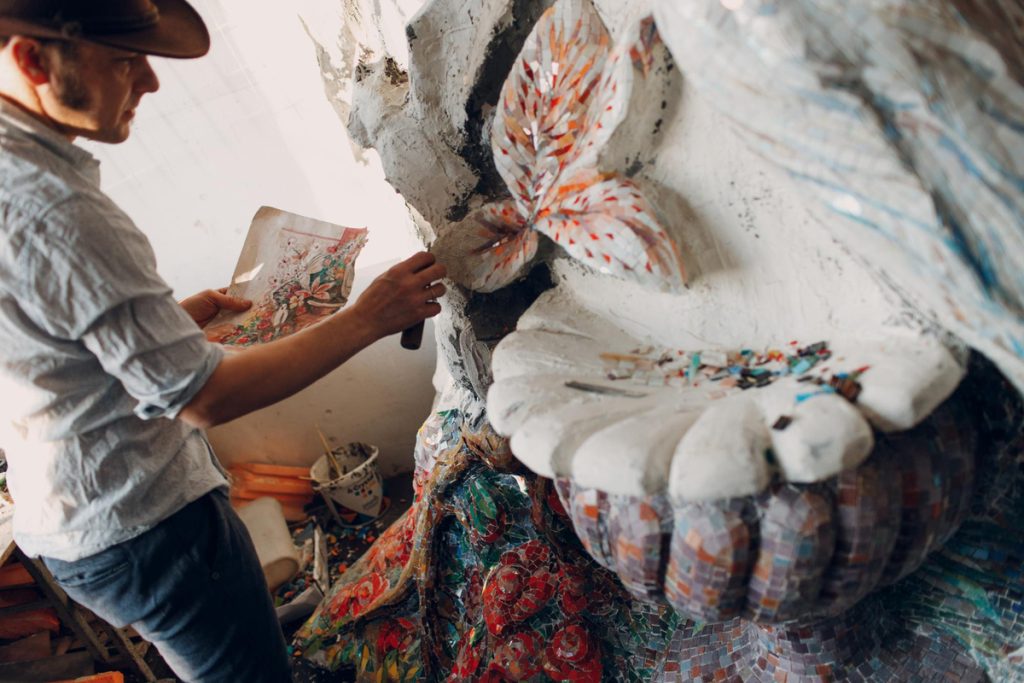Renzo Piano, the illustrious architect behind some of the world’s most iconic structures, including the Shard in London and the Centre Pompidou in Paris, has captivated audiences with his innovative approach to design. From a young age, Piano’s fascination with architecture was ignited by his father’s work as a builder, yet he chose to redefine the principles of construction by focusing on lightness rather than heaviness. His architectural philosophy emphasizes the balance between functionality and elegance, embodying the ideals of Renzo Piano architecture. In a recent interview, he revealed how literature, much like his architectural practice, reflects the nuances of weightlessness—both an artistic and philosophical quest. Through his projects and discussions, Piano continues to enchant the world, urging us to consider how architecture can elevate our daily experiences.
Renzo Piano is a name synonymous with transformative architecture and creative ingenuity. His landmark designs, such as the Shard in London and the renowned Centre Pompidou in Paris, serve as testaments to his conceptual mastery. This exploration of architecture goes beyond mere structure; it invites dialogue about the interplay between space and human experience. In thoughtful reflections, including various insightful interviews, Piano intertwines the influence of literature with his architectural philosophy, suggesting that both disciplines seek to capture and express the essence of life. By embracing a lighter perspective, Piano challenges traditional understandings of physicality in the built environment, reshaping our perceptions of artistic expression and function.
Renzo Piano: The Architect of Lightness
Renzo Piano has become synonymous with a lighter approach to architecture, diverging from traditional heavy constructions associated with his father’s work. Born in Genoa, his architectural philosophy revolves around the concept of weightlessness, which can be seen in masterpieces such as the Shard in London and the Centre Pompidou in Paris. These structures embody a breath of fresh air within their respective urban landscapes, gaining not just aesthetic beauty but also functionality. Piano’s designs invite people to interact with them on a different level, allowing the buildings to resonate with a sense of floating grace.
In an interview, Piano expressed his desire to transcend the physicality of structures by crafting spaces that seem to soar into the sky. His fascination with the interplay of light and transparency leads to creations that feel as if they exist in harmony with their environment. By implementing advanced materials and innovative techniques, he explores the delicate balance between form and the forces of nature, ensuring that every project carries an ethereal quality that is both engaging and contemplative.
The Influence of Literature on Renzo Piano’s Designs
Literature has always held a special place in Renzo Piano’s process, influencing his perception of building and space. Works like Dostoevsky’s “The Idiot” resonate profoundly with Piano, as they underscore the importance of beauty within architecture. The interplay between aesthetic appeal and functionality mirrors Piano’s own belief that buildings must not only serve a purpose but also evoke emotion and inspire interaction among people. His ability to intertwine philosophical concepts with architectural elements further enhances the narratives his structures tell.
Moreover, visiting the Centre Pompidou with Italo Calvino inspired Piano profoundly. Calvino’s story of a boy residing among the trees reflects Piano’s ambition to create elevated spaces that foster a sense of escape and wonder. This connection to literature fuels Piano’s imaginative spirit, allowing him to view structures not just as buildings, but as realms where stories unfold and connections between individuals are strengthened. The essence of skepticism and exploration in Calvino’s work comes alive in Piano’s architectural philosophy, making his designs tell a unique story of their own.
The Shard: A Masterpiece of Modern Architecture
The Shard, designed by Renzo Piano, stands as a testament to his remarkable approach to urban design and architectural innovation. Soaring at 310 meters, it not only dominates London’s skyline but also embodies Piano’s vision of combining lightness with functionality. Its glass façade reflects the changing patterns of the sky, creating a living sculpture that appears to float above the bustling city. The Shard’s unique tapering form enhances its visual appeal, suggesting a sharp ascent while simultaneously grounding itself in the urban environment.
In capturing the essence of lightness, the Shard provides an exhilarating experience for both visitors and residents. The use of advanced glass technology allows natural light to permeate the interior spaces while minimizing the building’s energy footprint, illustrating Piano’s commitment to sustainability. Each level of the Shard presents open, airy spaces that amplify the feeling of liberation and creativity, encouraging collaboration and connection—hallmarks of Piano’s architectural ideology.
Exploring the Centre Pompidou
The Centre Pompidou, co-designed by Renzo Piano and Richard Rogers, is an architectural wonder that revolutionized the concept of cultural space. With its external structural framework, colorful piping, and transparent envelope, the building challenges conventional architectural forms by placing machinery and circulation elements on the exterior. This radical approach not only enhances the visual drama of the structure but also emphasizes accessibility and openness, inviting the public to engage with art in an unprecedented way.
Piano’s design for the Centre Pompidou reflects not just his vision of weightlessness but also embodies the integration of the arts with architecture, proving that spaces can transcend their original purposes. The vibrant public squares surrounding the building foster a sense of community, encouraging social interaction and engagement with culture. As a symbol of innovation, the Centre Pompidou has remained a critical focal point in Parisian life, demonstrating how architecture can shape experiences and inspire creativity.
The Intersection of Philosophy and Architecture
Renzo Piano’s work exemplifies a profound linking of philosophy and architecture, where literary influences shape the structural narrative of his designs. He embodies this concept in his appreciation for figures like Lucretius, who posited that the world is composed of unseen, weightless particles. Piano often draws parallels between these philosophical thoughts and the architectural techniques he employs, turning buildings into entities that not only serve aesthetic purposes but also invoke deeper existential questions about space and human experience.
Piano’s designs encourage introspection, mirroring the sentiments expressed in Milan Kundera’s “The Unbearable Lightness of Being.” Just as Kundera examines the burdens and levities of human existence, Piano’s architecture challenges people to consider their relationship with the built environment. There is an ongoing dialogue between the individual and the structure, facilitated by a thoughtful approach to light, form, and space that elevates architecture into a poetic act.
The Role of Modern Materials in Renzo Piano’s Architecture
Renzo Piano’s inventive use of modern materials marks a significant evolution in architectural design. By integrating advanced technologies and lightweight materials, he succeeds in creating structures that resonate with a sense of ethereality and openness. Notably, in the Shard and the Whitney Museum, Piano utilizes glass extensively, allowing for natural light to dictate the atmosphere of each space. This approach not only minimizes the energy usage of these buildings but also connects their interiors with the dynamic exterior environment.
Piano’s fascination with materials extends beyond aesthetics to encompass sustainability, as he often opts for eco-friendly resources that have a lower environmental impact. His commitment to innovation is evident in how he employs techniques that make structures perform efficiently, while preserving the delicate balance between nature and architecture. This modern materiality not only facilitates weightlessness in design but also fosters a trend towards responsible and thoughtful architectural practices.
Renzo Piano’s Legacy and Impact on Future Architects
The legacy of Renzo Piano is shaping the aspirations of future architects around the globe. His commitment to creating lightweight, inviting structures with a focus on community engagement sets a benchmark for contemporary architectural practices. Piano’s unique ability to merge functionality with artistic expression models a new wave of thinking that challenges aspiring architects to consider the broader implications of their designs. His influence can be seen in the growing advocacy for sustainable architecture and the integration of cultural narratives into building designs.
Moreover, Piano’s work serves as an inspiration for the next generation of architects to embrace the art of storytelling through space. As they tackle the challenges of urbanization and ecological sustainability, future designers can draw from Piano’s experiences and philosophy, continually pushing the boundaries of traditional architectural norms. The intersection of architecture and literature emphasized in his projects invites architects to explore diverse narratives, reflecting the ever-changing nature of human society and its environments.
Renzo Piano’s Philosophical Underpinnings in Design
Renzo Piano’s approach to design is deeply rooted in philosophical inquiry, reflecting a gentle balance between logic and creativity. His designs symbolize more than mere physical structures; they encapsulate the thoughts of numerous philosophers and writers, illustrating a journey toward finding truth and meaning through architecture. Piano’s reference to literary works like Lucretius’s discussions on particles underscores a continuing exploration of what it means to inhabit space, posing questions about visibility, existence, and human experience.
By diving into the philosophies behind architecture, Piano provokes discourse on the relationship between space and user perception. His designs invite introspection, prompting individuals not only to experience these spaces but also to reflect on their own lives and narratives. This myriad of influences contributes a rich tapestry to his work, establishing Piano not just as an architect but as a thinker, a storyteller who continuously seeks to redefine the role of architecture in the human condition.
Frequently Asked Questions
What are some notable buildings designed by Renzo Piano?
Renzo Piano is renowned for his innovative architectural designs, including iconic structures such as the Shard in London, the Centre Pompidou in Paris, and the Whitney Museum of American Art in New York. Each of these buildings showcases Piano’s unique approach to lightweight architectural forms and his ability to harmonize with their surroundings.
How did Renzo Piano’s background influence his architectural style?
Renzo Piano grew up watching his father, a builder, work with traditional heavy materials such as concrete and bricks. This background inspired him to pursue a lighter architectural style, epitomized in designs like the Shard and the Centre Pompidou, where he captures a sense of weightlessness and elegance.
What philosophy guides Renzo Piano’s architecture?
Renzo Piano believes in the unity of pragmatism, humanism, and beauty in architecture. He emphasizes the importance of creating spaces that are not only functional but also resonate with human experiences, reflecting his mantra that beauty can elevate the ordinary to the extraordinary.
What themes are present in Renzo Piano’s works, such as the Shard?
In his architectural works like the Shard, Renzo Piano often explores themes of weightlessness and lightness, drawing inspiration from natural landscapes and the flow of light. His designs aim to create a sense of magic and connection to the environment, transforming urban spaces into experiences that feel ethereal.
How does Renzo Piano view the relationship between architecture and literature?
Renzo Piano sees a deep connection between architecture and literature, as both disciplines explore the human experience and convey stories. He cites influential literary works that shape his architectural philosophy, emphasizing how these narratives inspire the beauty and functionality he strives to achieve in his buildings.
What can be learned from Renzo Piano’s interview about his design philosophy?
In interviews, Renzo Piano often discusses his fascination with light and how it influences architecture. He emphasizes the idea that buildings should not only serve their functional purposes but also evoke emotions and provoke thought, which aligns with the principles of architectural beauty and human experience.
How does Renzo Piano incorporate nature into his designs?
Renzo Piano frequently integrates natural elements into his designs, as seen in his works like the Centre Pompidou and the Shard. He believes in crafting buildings that respond to their natural surroundings, using light and space to create a seamless interaction between the built environment and nature.
What is the significance of weightlessness in Renzo Piano’s architecture?
Weightlessness is a central theme in Renzo Piano’s architectural philosophy. He aims to create structures that seem to float or hover, challenging perceptions of mass and gravity. This concept serves not only as an aesthetic goal but also as a metaphor for freedom and innovation in the urban landscape.
How does Renzo Piano’s Italian heritage influence his work?
Renzo Piano’s Italian heritage profoundly influences his architectural style. Growing up in Genoa, a coastal city, he draws inspiration from its light and fluidity, which is evident in his designs. His heritage informs his commitment to creating beauty and harmony in his architectural expressions.
What impact has Renzo Piano had on contemporary architecture?
Renzo Piano has significantly shaped contemporary architecture by advocating for designs that prioritize sustainability, human experience, and aesthetic value. His innovative use of materials and commitment to creating light, inviting spaces have set a precedent for modern architecture and inspired future generations.
| Key Point | Description |
|---|---|
| Early Influences | Renzo Piano grew up in Italy, influenced by his father’s work as a builder using heavy materials. |
| Philosophy of Weightlessness | He aims to create a sense of weightlessness in his architecture, inspired by the magic of his hometown’s harbor. |
| Influential Books | Books like ‘On the Nature of Things’ and ‘The Unbearable Lightness of Being’ shaped his views on architecture and life. |
| Three Essentials for Builders | Renzo highlights pragmatism, humanity, and beauty as essential qualities for good building. |
| Creative Process | His design philosophy incorporates personal experiences, literary inspirations, and a desire to evoke emotional responses. |
| Architecture as Storytelling | Piano views architecture as a narrative, where each building tells a unique story and connects with its context. |
Summary
Renzo Piano is a visionary architect who believes in the beauty of weightlessness in design. By drawing inspiration from his childhood in Genoa and the literary works he cherishes, he infuses a sense of magic and lightness into his architectural creations, such as the Shard and the Centre Pompidou. His thoughtful approach emphasizes the importance of combining functionality and aesthetic appeal, ultimately inviting users to experience a deeper connection with the spaces he creates. Piano’s philosophy illustrates the significance of art in architecture, encouraging others to see buildings not just as structures but as realms of inspiration and narrative.



